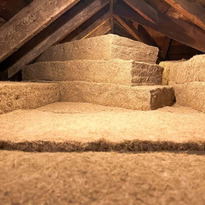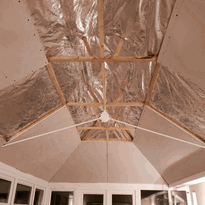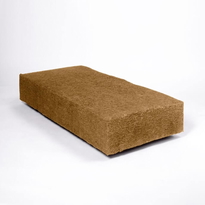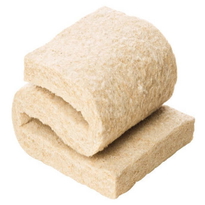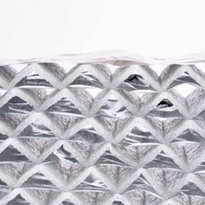Pitched roof Insulation
Here at Buy Insulation Online, we help you save this 25% energy by supplying you with top-quality pitched roof insulation online, at affordable prices. We stock insulation batts, PIR boards, polystyrene insulation, foil insulation rolls and other insulation products that can help improve your building’s energy efficiency.
Similar Categories
Guide to Pitched Roof Insulation: Enhancing Energy Efficiency and Comfort in Your Home
Effective roof insulation is a crucial investment in your home that can prevent cold air from entering and warm or heated air from escaping through the roof rafters. Without proper insulation, you can lose nearly 20-25% of your heat or energy. In this comprehensive guide, we will address the importance of pitched roof insulation, its benefits, types of insulation products, and essential tips for choosing and installing the right insulation for your home.
Understanding Pitched Roofs
A pitched roof is characterized by two angled segments meeting in the middle, often with gables at either end. This design is common in UK homes, offering durability and ideal water drainage, making them resilient against wind, rain, snow, and ice. Pitched roofs not only provide structural integrity but also enhance the aesthetic appeal of your home, making them a preferred choice over flat roofs.
The Benefits of Pitched Roof Insulation
Pitched roof insulation offers a range of benefits, making it a worthwhile investment for homeowners:
1. Energy Efficiency: Proper insulation keeps your home warmer in winter and cooler in summer, reducing the need for excessive heating and cooling.
2. Soundproofing: Insulated roofs can help mitigate noise, making them especially valuable in noisy urban areas with high traffic.
3. Environmental Impact: Pitched roof insulation can significantly reduce carbon emissions, potentially saving 1030 kg per year.
4. Additional Space: Insulating at the rafter level can create a warm and cosy loft area that can be utilized as an office space or an extra room for relaxation.
5. Cost Savings: By reducing your energy consumption, pitched roof insulation can lead to long-term savings on your energy bills.
However, it's important to remember that for effective insulation, proper ventilation is essential. Ventilation and insulation must work together to create an energy-efficient and comfortable home.
Methods of Pitched Roof Insulation
Pitched roofs can be insulated from both the inside and outside, depending on your intended use of the loft area:
Warm Deck:
- Insulation is placed over the rafters.
- A felt covering, battening, and tiles are added according to manufacturer specifications.
- Ideal for creating a warm, habitable loft space.
Cold Deck:
- Insulation is inserted between the ceiling joists or the rafters.
- Thickness varies depending on the material and manufacturer's specifications.
- Suitable for storage in the loft area.
Vents should be installed along the eaves or ridge of the roof, depending on where the insulation is placed.
Selecting the Right Insulation Material
Several insulation materials are available for pitched roofs:
1. Insulation Batts: Made of mineral wool, this friction-fit between rafters and offer excellent thermal efficiency, sound insulation, fire resistance, and water resistance. Proper ventilation is essential to prevent condensation.
2. Foil Insulation: Multifoils like Actis Hybris or YBS Superquilt reflect thermal radiation and are stapled into the undersides of rafters. They offer efficient insulation for both hot and cold climates, despite higher initial costs.
3. Foam Boards: Insulation boards made of PIR, polystyrene, and insulated plasterboards provide superior thermal insulation with reduced thickness. Brands like Celotex, Iko, and Xtratherm offer high-quality options.
4. Blown-in Insulation: Cellulose insulation or loose mineral wool can be blown into the roof space to provide effective insulation.
5. Rockwool Insulation: Products like Flexi, RWA45, and Rainscreen Duo offer superior thermal, acoustic, and fire insulation. These are made with mineral wool and are suitable for pitched roofs.
Building Regulations for Pitched Roof Insulation
The latest building regulations stipulate specific U-value requirements for pitched roof insulation. In new builds, you must achieve a minimum U-value of 0.11 W/m²K, while refurbishments require a U-value of 0.16 W/m²K on the roof.
Choosing and Installing Pitched Roof Insulation
To select and install the best insulation for your home, consider the following factors:
- Roof Type: Determine whether your roof is warm or cold and the type of roof covering (tiles, slates, metal).
- Available Space: Measure the dimensions of your roof space to determine the quantity and size of insulation required.
- Desired Insulation Level: Decide how much insulation you need based on your thermal performance, comfort, and energy savings goals.
- Insulation Type: Compare the advantages and disadvantages of different insulation materials to align with your preferences and budget.
- Proper Installation: Follow these key steps to ensure a successful insulation project:
- Prepare the roof space, clear debris, and ensure proper ventilation.
- Measure, cut, and fit the insulation with attention to gaps for ventilation and expansion.
- Add a vapour barrier to prevent moisture issues.
- Ensure adequate ventilation using roof vents, eaves vents, or ridge vents.
- Address fire safety concerns if necessary.
- Consider the environmental impact and align your insulation choice with sustainability goals.
- Seek professional advice and follow local building codes and regulations.
By following these guidelines, you can choose, install, and maintain pitched roof insulation that enhances your home's energy efficiency, comfort, and value.
Can I use Rockwool for the Roof?
Yes, you can use Rockwool insulation for insulating between roof rafters on a pitched roof. Rockwool insulation slabs like Flexi, RWA45, and rainscreen duo are all made with mineral wool and give superior thermal, acoustic and fire insulation.
What are the building regulations for Pitched roof insulation?
The latest changes in the building regulations are reflected in the Part L document. According to recent changes in the building regulations, you have to achieve a minimum U-value of 0.11 W/m²K in new builds and 0.16 W/m²K in refurbishments on the roof.



